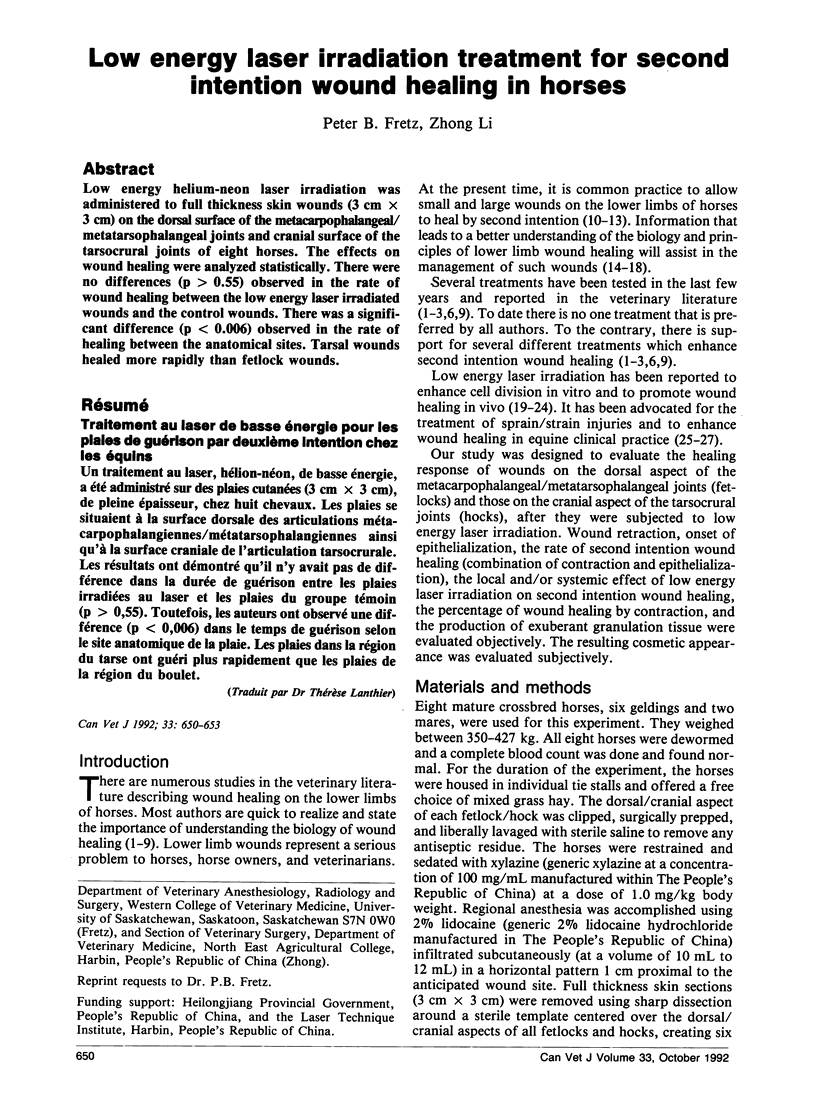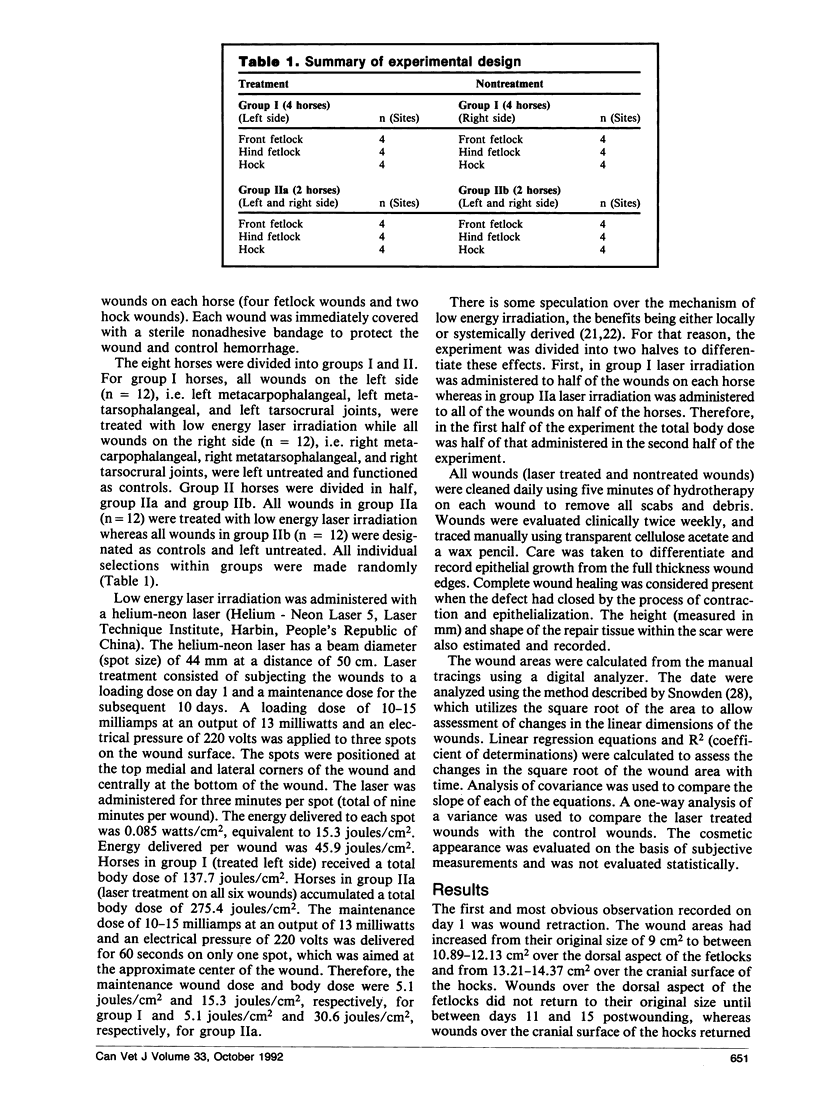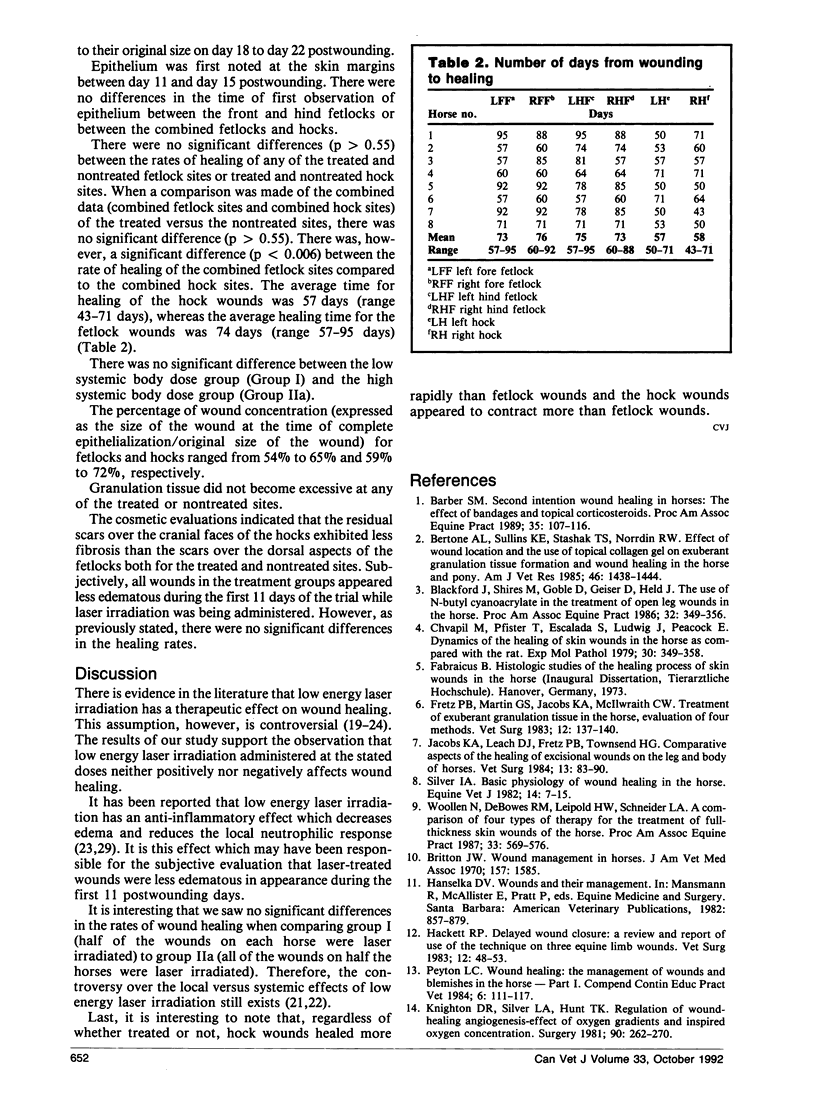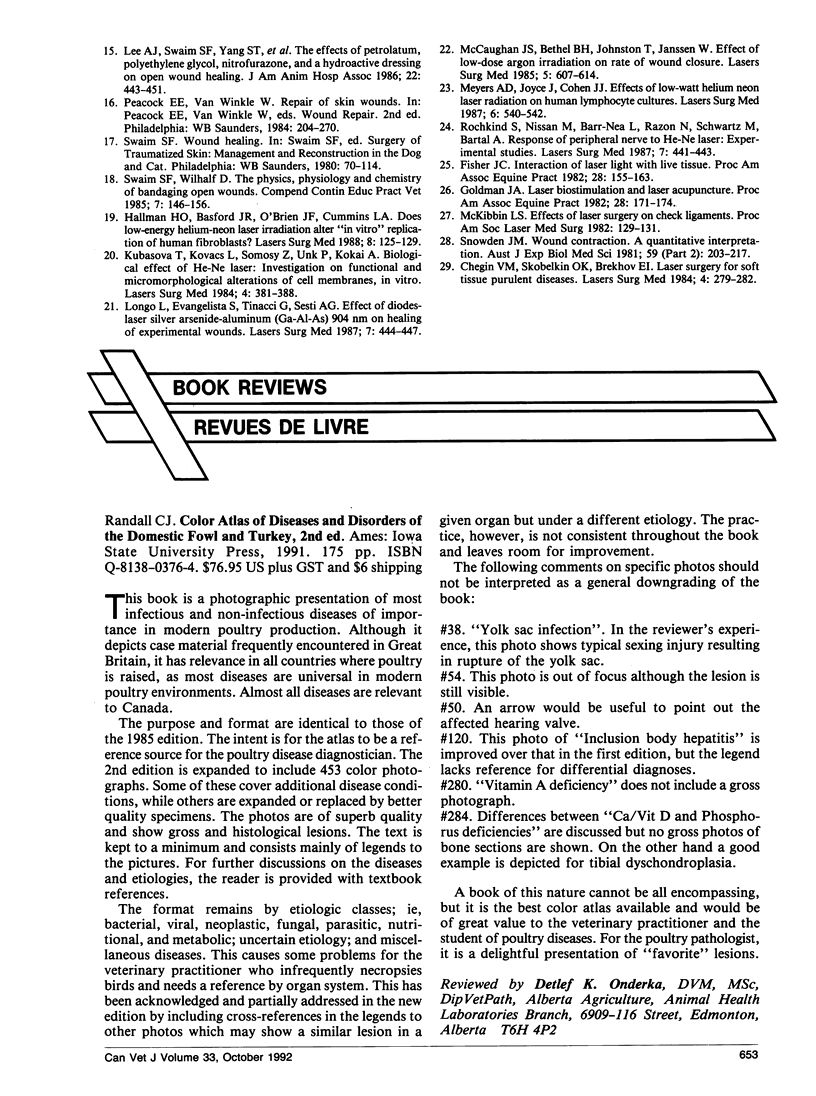Abstract
Low energy helium-neon laser irradiation was administered to full thickness skin wounds (3 cm × 3 cm) on the dorsal surface of the metacarpophalangeal/metatarsophalangeal joints and cranial surface of the tarsocrural joints of eight horses. The effects on wound healing were analyzed statistically. There were no differences (p > 0.55) observed in the rate of wound healing between the low energy laser irradiated wounds and the control wounds. There was a significant difference (p < 0.006) observed in the rate of healing between the anatomical sites. Tarsal wounds healed more rapidly than fetlock wounds.
Full text
PDF



Selected References
These references are in PubMed. This may not be the complete list of references from this article.
- Bertone A. L., Sullins K. E., Stashak T. S., Norrdin R. W. Effect of wound location and the use of topical collagen gel on exuberant granulation tissue formation and wound healing in the horse and pony. Am J Vet Res. 1985 Jul;46(7):1438–1444. [PubMed] [Google Scholar]
- Britton J. W. Wound management in horses. J Am Vet Med Assoc. 1970 Dec 1;157(11):1585–1589. [PubMed] [Google Scholar]
- Chegin V. M., Skobelkin O. K., Brekhov E. I. Laser surgery for soft tissue purulent diseases. Lasers Surg Med. 1984;4(3):279–282. doi: 10.1002/lsm.1900040308. [DOI] [PubMed] [Google Scholar]
- Chvapil M., Pfister T., Escalada S., Ludwig J., Peacock E. E., Jr Dynamics of the healing of skin wounds in the horse as compared with the rat. Exp Mol Pathol. 1979 Jun;30(3):349–359. doi: 10.1016/0014-4800(79)90089-3. [DOI] [PubMed] [Google Scholar]
- Hallman H. O., Basford J. R., O'Brien J. F., Cummins L. A. Does low-energy helium-neon laser irradiation alter "in vitro" replication of human fibroblasts? Lasers Surg Med. 1988;8(2):125–129. doi: 10.1002/lsm.1900080206. [DOI] [PubMed] [Google Scholar]
- Knighton D. R., Silver I. A., Hunt T. K. Regulation of wound-healing angiogenesis-effect of oxygen gradients and inspired oxygen concentration. Surgery. 1981 Aug;90(2):262–270. [PubMed] [Google Scholar]
- Kubasova T., Kovács L., Somosy Z., Unk P., Kókai A. Biological effect of He-Ne laser: investigations on functional and micromorphological alterations of cell membranes, in vitro. Lasers Surg Med. 1984;4(4):381–388. doi: 10.1002/lsm.1900040411. [DOI] [PubMed] [Google Scholar]
- Longo L., Evangelista S., Tinacci G., Sesti A. G. Effect of diodes-laser silver arsenide-aluminium (Ga-Al-As) 904 nm on healing of experimental wounds. Lasers Surg Med. 1987;7(5):444–447. doi: 10.1002/lsm.1900070513. [DOI] [PubMed] [Google Scholar]
- McCaughan J. S., Jr, Bethel B. H., Johnston T., Janssen W. Effect of low-dose argon irradiation on rate of wound closure. Lasers Surg Med. 1985;5(6):607–614. doi: 10.1002/lsm.1900050609. [DOI] [PubMed] [Google Scholar]
- Meyers A. D., Joyce J., Cohen J. J. Effects of low-watt helium neon laser radiation on human lymphocyte cultures. Lasers Surg Med. 1987;6(6):540–542. doi: 10.1002/lsm.1900060612. [DOI] [PubMed] [Google Scholar]
- Rochkind S., Nissan M., Barr-Nea L., Razon N., Schwartz M., Bartal A. Response of peripheral nerve to He-Ne laser: experimental studies. Lasers Surg Med. 1987;7(5):441–443. doi: 10.1002/lsm.1900070512. [DOI] [PubMed] [Google Scholar]
- Silver I. A. Basic physiology of wound healing in the horse. Equine Vet J. 1982 Jan;14(1):7–15. doi: 10.1111/j.2042-3306.1982.tb02326.x. [DOI] [PubMed] [Google Scholar]
- Snowden J. M. Wound contraction. A quantitative interpretation. Aust J Exp Biol Med Sci. 1981 Apr;59(Pt 2):203–217. doi: 10.1038/icb.1981.16. [DOI] [PubMed] [Google Scholar]


